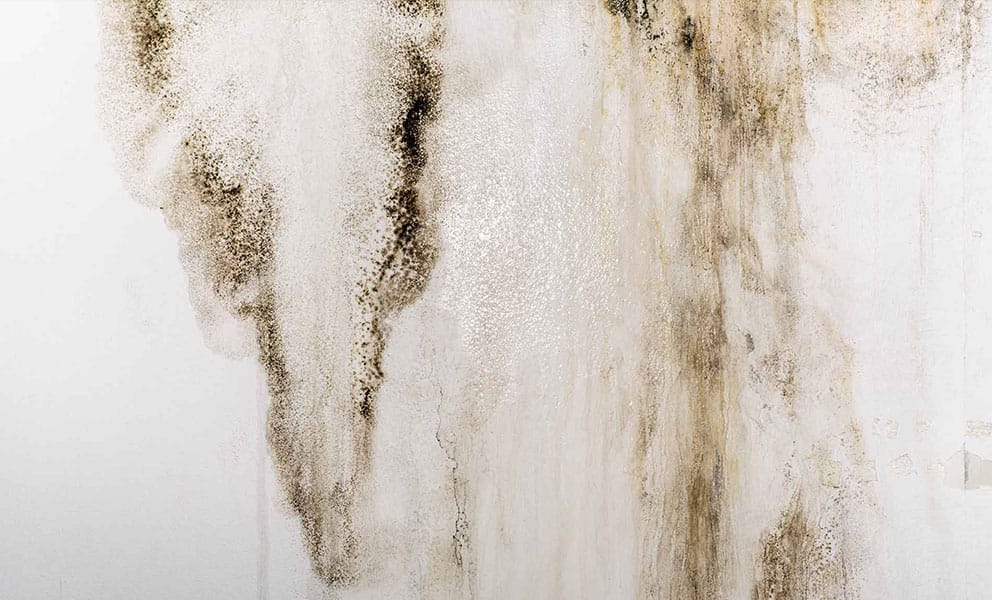
These shocking statistics are exactly why homeowners, landlords and housing associations need to know how to combat damp and mould. Keep reading as we discuss how to combat damp and mould, including the three different types.
In its report on houses with damp, the government cites three types of damp:
Whatever the case, the moisture held in damp, porous surfaces provides the perfect environment for mould to develop. When it does, it produces allergens, irritants and even toxic substances.
According to the NHS, the spores released by mould can lead to allergic reactions, respiratory problems and even a weakened immune system. The risk is higher for babies, children, elderly people, and those who have existing problems with their skin, respiration or immune system.
Whether you’re a homeowner, landlord or housing manager, it’s clear that damp and mould are not something you should ignore. To combat damp and mould, it’s important to identify what type of damp you’re dealing with.
One tell-tale sign of rising damp versus other forms of damp is that it occurs at the bottom of your walls. The moisture moves upwards, which means you won’t see it isolated in the top corners of rooms. If you spot damp or mould just above your skirting board, rising damp could be the culprit.
For the same reason, you may also spot “tide marks” on your walls. This is where the damp stops moving upwards, typically at around one metre high. Rising damp can go further up your wall than this, but it’s very rare.
Another sign to look out for are white salt deposits or stains on your walls. This is because the groundwater contains salt, which is left on your walls when the water evaporates.
Rising damp is caused by inadequate damp proofing or a complete lack of a damp-proof course in your walls. To combat the problem, most houses require a new damp-proof course to be installed. This is a waterproof barrier at least six inches above ground level, which will stop water rising up through the ground via capillary action.
It most commonly takes the form of a pore blocking salt mixture or water repellent chemicals. Alternatively, an exterior wall coating can be used to stop water rising through external walls.
As the name suggests, penetrating damp is caused by penetration of your walls, roof or windows. Given this wide scope, it can be hard to distinguish from other types of damp.
Many people think they have rising damp because they spot a patch lower on their wall for example, but later realise it’s due to penetration. Similarly, you might think that you have damp from condensation, when in fact your roof is leaking.
This is why it’s important to check for signs of penetrating damp before considering condensation and rising damp. Here are some areas to check before considering how to combat damp and mould:
To combat the issue, you need to identify where water is coming from and eliminate the root cause. This could mean repairs to your roof or windows, or it may be an issue with your external walls – such as cracked render. A waterproof exterior wall coating is an effective way to stop water getting through for years to come.
Damp and mould from condensation is caused by an excess of moisture trapped inside your home. It’s held within humid air before being drawn to cold surfaces, where it settles as a liquid (condensation).
This could be due to moisture-releasing activities like drying clothes and showering. However, these are typically unavoidable. The more common causes are poor ventilation and a lack of heating in some or all parts of your home.
Combatting damp and mould which originates from condensation is slightly more complex. In this instance, your house may be insufficiently ventilated. Installing extractor fans in the kitchen and bathroom and opening windows whenever possible are both ways to combat the problem.
However, in some cases, this isn’t enough. That’s where a damp-proof internal wall coating can help. It stops condensation forming on the surface of walls and ceilings to eliminate the problem.
If you’re wondering how to combat damp and mould, Corksol provides a range of effective, eco-friendly products that can eliminate them for good. Tackling the root cause – whether it’s penetration, rising damp or porous surfaces – our natural cork-based wall coatings will make sure you or your tenants have a healthy, safe space to live for years to come.
To find out more, contact our team today.
"*" indicates required fields